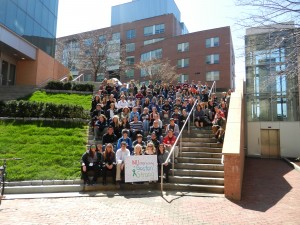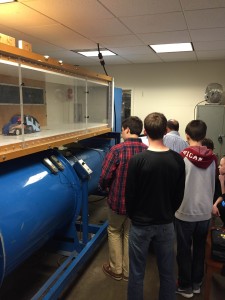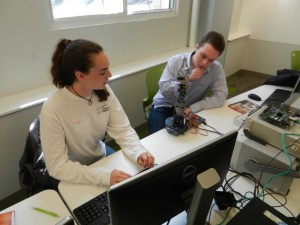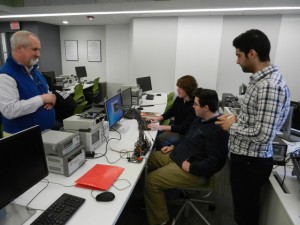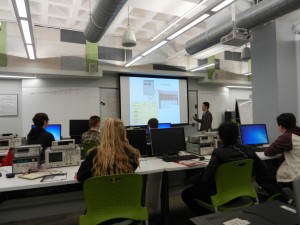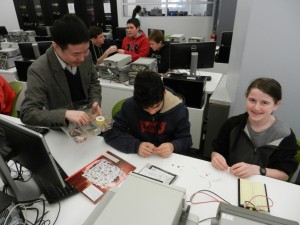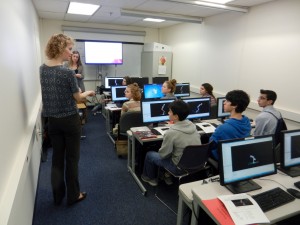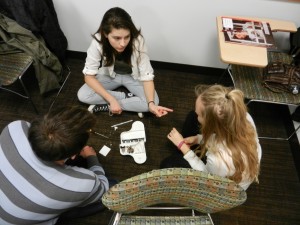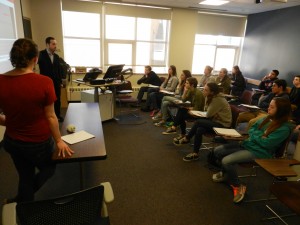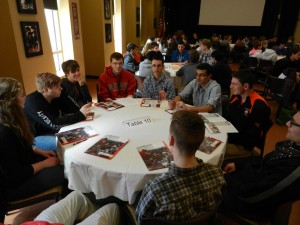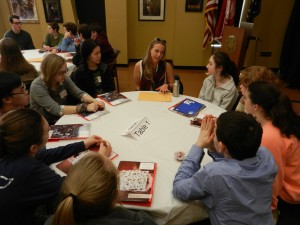Today, the Center for STEM Education, in conjunction with the College of Engineering, held it’s spring 2016 edition of Building Bridges. 90 students from 45 different schools in 8 states came to learn about various different engineering topics.
Rifat Sipahi taught a bioengineering activity, “Detecting Disease Through Handwriting,” in which students learned how to take an engineering approach to addressing problems due to hand tremors.
Rich Whalen taught a mechanical engineering activity, “Streamlining an SUV,” in which students used the mechanical engineering wind tunnel to investigate the drag force on model sports utility vehicles of different shapes.
Jose Martinez Lorenzo taught a bioengineering activity, “Multimodal Breast Cancer Detection: NRI and acoustic-tomography,” in which students learned the basic principles of wave propagation, data collection, and image formation.
David Kaeli taught an electrical/computer engineering activity, Talking to my Robot,” in which students learned about embedded systems and robot control by figuring out sets of commands to control a robot arm.
Randall Erb taught a mechanical engineering activity, “3D Printing,” in which students learned about 3D printing in the materials industry, printed out objects with a 3D printer and made their own objects through layer-by-layer manufacturing.
Phil Larese-Casanova taught an environmental engineering activity, “Water Treatment,” in which students learned how river water is converted to drinking water and conducted their own table-top treatment plant.
Alpay Demiryurek taught a civil/environmental engineering activity, “Designing Earthquake Resistant Buildings,” in which students explored the world of structural engineering. They saw how designing earth-quake proof structures is important to the safety of millions. They participated in small scale tower building and tested out their structures on the shake table.
Yongmin Liu taught an electrical engineering activity, “Lost In the Dark?,” in which students learned basic circuit design and then designed and built a circuit of an electronic nightlight.
Matthew Eckelman taught a civil/environmental engineering activity, “Product Disassembly & Redesign,” in which students disassembled several types of consumer products to find out the main materials used and brainstormed about how to redesign these products to improve environmental performance and recyclability.
Sandra Shefelbine and one of her research students, Amanda Anderson, together taught a bioengineering activity, “Figuring our How our Bodies Move,” in which students were introduced to OpenSim, a musculoskeletal modeling software that allows movement simulation.
Sue Freeman, Kris Jaeger-Helton, and Dayna Martinez, together taught an industrial engineering activity, “Can you Build it Better? Faster?,” in which students explored two primary modes of production, assembly line vs. single production, in a team LEGO challenge.
The Center for STEM Education in combination with Northeastern student volunteers hosted a STEM/College 101 activity, during which students got a chance to ask engineering students anything about their college experiences!
- Group photo of students, staff, and volunteers
- Rich Whalen shows students how their streamlined SUV behaves in the wind tunnel
- Students program the robotic arm to move
- David Kaeli and one of his students helping out
- Yongmin Liu teaches students about circuit design
- Yongmin Liu helps students get started building flashlights
- Sandra Shefelbine and Amanda Anderson teach about OpenSim
- Students disassemble a device
- Rifat Sipahi teaches about disease detection through handwriting
- STEM/College 101
- STEM/College 101

